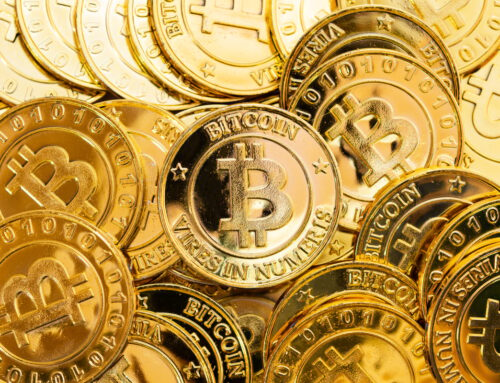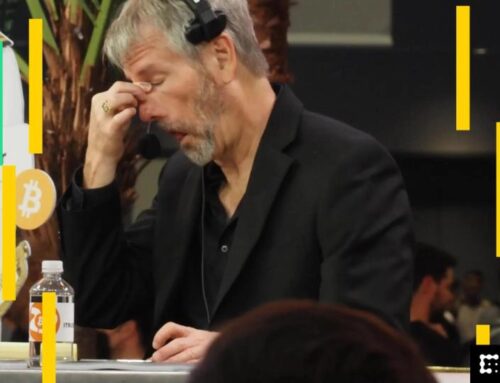Rich Countries’ Energy Transitions Threaten Indigenous Peoples and the Environment
June 5, 2025
Metals and minerals form the backbone of low-carbon energy technologies like solar panels, grid infrastructure and car batteries.
Yet, in many cases, people live on or near the lands where copper, lithium, nickel and other materials are extracted to meet growing energy demand. What does the mining boom mean for them?
More than half of mines extracting “energy transition minerals” are located on or near Indigenous lands, according to a 2022 study by researchers at the University of Queensland in Australia. That’s 2,700 mining projects worldwide.
Until now, many of those forests, grasslands and mountains have remained intact because of Indigenous peoples’ stewardship—a raft of studies show that Indigenous territories have outsized biodiversity.
Get Inside Clean Energy
Today’s Climate
Twice-a-week
A digest of the most pressing climate-related news, released every Tuesday and Friday.
Get Today’s Climate
Breaking News
Don’t miss a beat. Get a daily email of our original, groundbreaking stories written by our national network of award-winning reporters.
Get Breaking News
ICN Sunday Morning
Go behind the scenes with executive editor Vernon Loeb and ICN reporters as they discuss one of the week’s top stories.
Get ICN Sunday Morning
Justice & Health
A digest of stories on the inequalities that worsen the impacts of climate change on vulnerable communities.
Get Justice & Health
Indigenous activist Edson Krenak has been taking his people, the Krenak, and other communities to mining summits and power centers to speak about their experiences with mining and what a “green transition” looks like in the places where extraction is taking place. He wants to stop a repeat of past harms from industrial mining: For decades, Indigenous voices have been sounding the alarm—and largely been ignored.
Krenak grew up in his people’s territory, located in the Brazilian state of Minas Gerais. Gold mining began there in the late 17th century, and by the 19th century, companies were mining rich deposits of iron ore, bauxite and other minerals. After decades of industrial pollution, deforestation and massive waste spills, the damage to the land has been so severe that the Krenak people now describe their rivers as “dead.”
Krenak, who is also the advocacy coordinator for the Indigenous-rights group Cultural Survival, spoke recently with Inside Climate News about mining, the “green transition” and climate change.
This conversation has been lightly edited for length and clarity.
KATIE SURMA: You’ve become a global advocate for mining-affected Indigenous communities. But you also have a deeply personal experience with the industry. Can you talk about that?
EDSON KRENAK: I grew up surrounded by mining. In my territory, we have almost 80 to 90 years of bad experiences with modern mining corporations, after centuries of colonial activities. The industry brought contamination, forced removals, displacement, violence and modern-day slavery, along with countless social crises. Communities like mine were torn apart. The Krenak people were among the most criminalized for defending their territories. We faced brutal repression—even a government-built prison, the Reformatório Krenak, designed to silence us. Then, in 2015, we experienced one of the worst disasters yet.

One of the most damaging legacies of mining here is the presence of tailings dams—giant pools that hold the toxic waste left behind after metals and minerals are extracted. In 2015, one of these dams collapsed, unleashing a flood of toxic sludge. Four years later, another dam burst. These tragedies became known as the Mariana and Brumadinho disasters, named after the towns nearest the dam sites.
If you could have seen our territories before mining arrived, you would have seen many mountains. They were named in our stories and they were part of our worldviews. These valleys and rivers were part of our ontologies, the way we understand the world. They were part of our spiritual systems, our cultures, and they also sustained our economic life and livelihoods. Everything was connected.
When we walk through the territory nowadays, we see two big rivers: the Doce River, which we call Watu, and the Paraopeba River. These two rivers once gave life to our territories.
Now, these two rivers are dead. Their spirits have left the water bodies. We can no longer perform our rituals. Some people say the Watu was killed by the Mariana dam collapse. Some scientists say it could take 10 generations before we can dive in the water again, swim or perform our spiritual rituals.
[NOTE: Brazilian mining consortium Samarco, which owns the dam responsible for the Mariana disaster, told Inside Climate News in a written statement that since the collapse, “Samarco has remained committed to repairing the impacts caused in a fair and respectful manner, with particular attention to the affected communities, including Indigenous peoples and Quilombola communities.” A reparation agreement was ratified by the country’s highest court last year.The statement also said, “Specifically regarding the Krenak people, actions have been carried out through the implementation of reparation and compensation measures, with the involvement of Indigenous representatives in discussions and decision-making processes.”]
SURMA: Some people see mining as part of the solution to climate change because it is extracting metals used in low-carbon energy technologies. But I’ve heard you talk about how mining also causes environmental degradation that can worsen climate change. Can you talk about that?
KRENAK: In our territories, if you look at the vegetation, animals and the forests around us, you’ll see the devastation from the tailings dam collapse. We live at the intersection of three ecologically sensitive biomes: the Caatinga, the Cerrado and the Atlantic Forest. These biomes depend on the large bodies of forests, mountains and rivers in the region. When those bodies are disturbed, we become even more vulnerable to climate change.
Many of our streams are also completely dead. You can walk through the land and count dozens of streams that no longer return, not after rain, not in spring, not in winter. We used to have seasonal rains in the region, but now we either get very heavy rains that destroy everything or face periods of drought lasting three or four years—all because of climate change.
In this very sensitive area, we depend deeply on the balance and protection of the environment. Mining has exploited and destroyed it to such a degree that we see no possibility of recovery.
“We used to have seasonal rains in the region, but now we either get very heavy rains that destroy everything or face periods of drought lasting three or four years—all because of climate change.”
SURMA: What is your response to people who say countries like Brazil have strong laws, mining companies follow those laws and sometimes accidents happen?
KRENAK:There are three main problems with that. First, on the ground, in the territories, communities do not have their rights respected. Their right to free, prior and informed consent isn’t implemented or even recognized in local laws. Judges, lawyers and local courts often don’t even know what FPIC is. So communities don’t have access to justice. When they need to defend their territories or protect a single right, they often have to travel all the way to the state capital because there are no local mechanisms to support them.
Meanwhile, federal prosecutors’ offices in the region are overwhelmed. One prosecutor may be responsible for more than 280 communities. So, at the local level, there’s no access to justice. There are no mechanisms in place to protect these communities, and they don’t have the resources to defend themselves.
At the regional level, there’s a huge absence of the state. Public education, healthcare and infrastructure are all lacking and this creates deep vulnerability. That vulnerability leads to other problems: conflicts between civil society groups and Indigenous peoples, or between Indigenous and Quilombola communities. The mining companies exploit these divisions. They co-opt people by offering small opportunities or promises of jobs or development.
At the federal level, it’s very political. Communities aren’t included in the legislative process. They’re not at the table when policy decisions are being made. Indigenous peoples have strong legal protections in the Brazilian Constitution, but the political will to implement those rights, or to include them in policymaking, is lacking.
Right now, for example, we’re facing the Temporal Framework bill, which would cut off Indigenous peoples’ claims to formally title their territories. We’ve been fighting this kind of legal attack under different names for decades.
It’s very difficult because our political institutions are weakened by massive economic pressure. Powerful actors like mining companies and agribusiness undermine the democratic legislative process. The laws we have weren’t built to empower communities. They were designed to serve national and international political agendas. It’s a playing field made for politicians, not for the people.
The state’s failure turns sovereignty into survival. We once governed our lands—now we beg for them. Every negotiation is a humiliating, stressful process. This isn’t justice, it’s violence.

SURMA: What do you think the wider public misunderstands about the impact environmental destruction has on the lives of Indigenous people?
KRENAK: For most Indigenous peoples in the world, identity is rooted in territory. In Brazil, we say: “We are biome.” We are people of the biome, people of the territory. Who we are is so deeply tied to the land that when we lose our territory, we lose our languages, our traditional ways of eating, praying, dancing, performing rituals—everything. We lose everything.
Beyond that, many of our livelihoods depend on a healthy environment. But for us, a healthy environment isn’t just about nature in a scientific sense. It’s spiritual and holistic. We belong to the territory. If the territory is unhealthy or unprotected, then we are unhealthy and unprotected. That’s why these rights are interconnected. In Brazil, we say that the fight for territory is the mother of all fights.
Personally, I use the word “territory” rather than “land” because land is a colonial concept, one based on the idea of terra nullius, of empty lands. Territory is different. It is a space full of stories, full of cultural and spiritual meaning. If you ask our leaders and elders, they will describe how our connections to each other and to our ancestors are formed and maintained through the territory. We say our territories are our veins, our blood and our face. They define who we are.
Right now, I live in Vienna, Austria, where I am studying.For those of us in the diaspora, we live in a constant state of melancholy.
My community often tells me, “Edson, we can’t leave the territory to fight. But you’re there. You speak English, you’re building your education. Use that to support our struggle from the outside.”
And that’s what I’m doing. But every single day, I think about going back. I think about being with my relatives to be close, to celebrate our culture, our rituals, our history.
This story is funded by readers like you.
Our nonprofit newsroom provides award-winning climate coverage free of charge and advertising. We rely on donations from readers like you to keep going. Please donate now to support our work.
SURMA: I’ve heard you talk before about the Potosí Principle—the idea that colonial-era silver mining in Potosí, Bolivia, set a precedent for how wealth is extracted from the Global South to enrich the Global North. Can you say more about that?
KRENAK: Today, transition minerals are being extracted from our territories to build electric vehicles and advanced technologies, not for us, but to support so-called “sustainable cities” and green lifestyles in places far from where the damage is being done. Our communities are becoming sacrifice zones once again. This so-called energy transition is not a just transition.
The United Nations’ own definition of a just transition says its goal is to “leave no one behind.” But in reality, our communities have already been left behind, in every sense. These plans don’t begin by asking what communities need, or what they hope and dream for. Instead, the decisions are made far away, and the consequences are imposed on us.
I traveled to Europe recently with community members from places being mined and they were shocked. They saw electric vehicle charging stations on every corner and said, “Wow, they’re decades ahead of us. We’ve never even seen an EV in our lives, and here, they’re everywhere.”
This is what we’re up against. It’s a future that claims to be clean and green, while still leaving entire peoples and territories behind.
“It’s frightening because everything they’ve fought for and protected for generations is being swept away by these mining companies.”
SURMA: I understand that right now you’re working with communities in Brazil impacted by lithium mining, which is a material used in electric vehicles. What’s happening in that community?
KRENAK: Right now, we’re trying to fight for one remaining environmental preservation area in the valley of Jequitinhonha called Chapada do Lagoão. It is the water heart of the region. Some springs there are permanent and some flow only during certain seasons. The communities rely on these springs: It’s their source of water and life.
But now, the lithium companies have received permits from the state government. They’ve set their sights on this reserve and are pressuring local authorities to pass laws that would reduce the size of the protected area to just one-third of its original size. We’ve been working for two years to protect this area. We’re exhausted.
It’s hard for me to even talk with many community leaders and members there. It’s my home too. But what they’re saying now feels so hopeless, so heavy. It’s frightening because everything they’ve fought for and protected for generations is being swept away by these mining companies.

If you go there, it’s heartbreaking. You see so much joy, abundance, culture, food, spiritual expression and history. You see a territory full of people with a different kind of wealth. They may not have money, or cars, or houses like we know in the Western world, but they have so much to offer. Being there really changes your understanding of what it means to be “poor” or “wealthy.”
When the companies come in and offer benefit-sharing agreements, the people say: “You want to make us poor. We don’t want the benefit of having a house in the city if it means giving up everything we have, everything we are, just for a bit of money. That’s not what we’re looking for.”
This is why I’m connected to this fight—because of my life, my history. My family could never return to our home area because the land was depleted. A few communities remain, and they’re still fighting to defend the territories.
Mining companies, governments, investors and consumers: They need to know this reality. This so-called solution under the name of the “green economy,” or “clean energy,” or electric cars isn’t clean. One of our leaders often reminds us, “It is always stained with our blood.” Every electric vehicle carries Indigenous blood in their batteries. This is not a clean energy solution.
Inside Climate News did not receive a response to requests for comment from the Brazilian embassy in Washington, D.C., the Brazilian Mining Association (IBRAM) and five mining companies operating in Minas Gerais. The U.S.-based industry group National Mining Association declined to comment.
About This Story
Perhaps you noticed: This story, like all the news we publish, is free to read. That’s because Inside Climate News is a 501c3 nonprofit organization. We do not charge a subscription fee, lock our news behind a paywall, or clutter our website with ads. We make our news on climate and the environment freely available to you and anyone who wants it.
That’s not all. We also share our news for free with scores of other media organizations around the country. Many of them can’t afford to do environmental journalism of their own. We’ve built bureaus from coast to coast to report local stories, collaborate with local newsrooms and co-publish articles so that this vital work is shared as widely as possible.
Two of us launched ICN in 2007. Six years later we earned a Pulitzer Prize for National Reporting, and now we run the oldest and largest dedicated climate newsroom in the nation. We tell the story in all its complexity. We hold polluters accountable. We expose environmental injustice. We debunk misinformation. We scrutinize solutions and inspire action.
Donations from readers like you fund every aspect of what we do. If you don’t already, will you support our ongoing work, our reporting on the biggest crisis facing our planet, and help us reach even more readers in more places?
Please take a moment to make a tax-deductible donation. Every one of them makes a difference.
Thank you,
Search
RECENT PRESS RELEASES
Related Post





